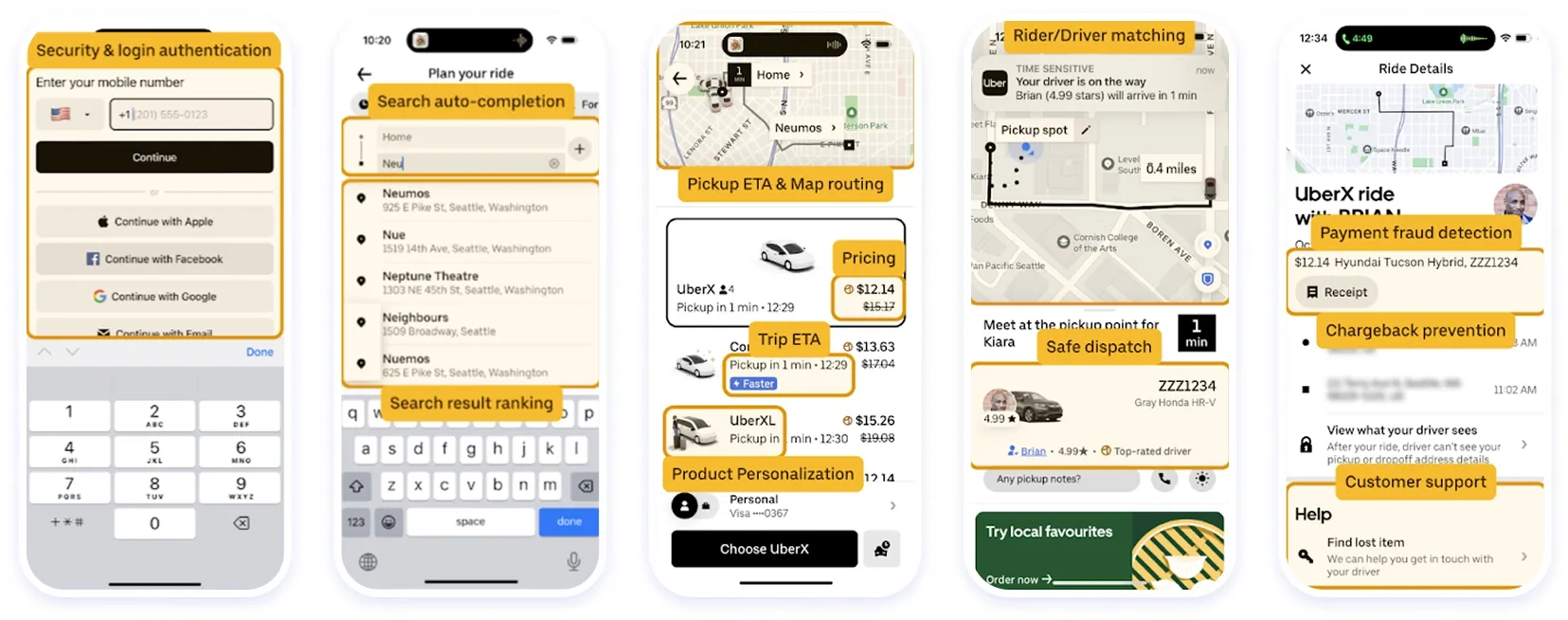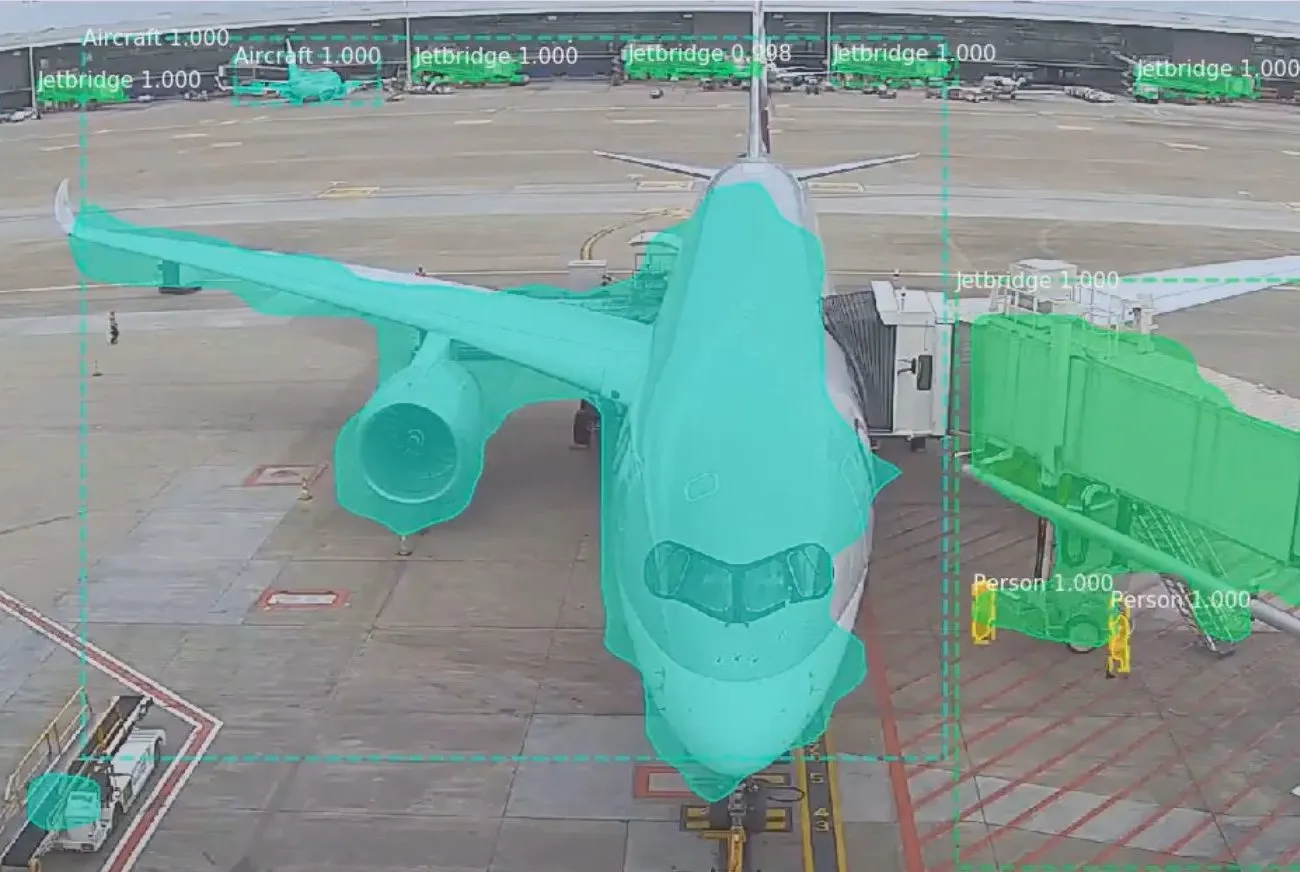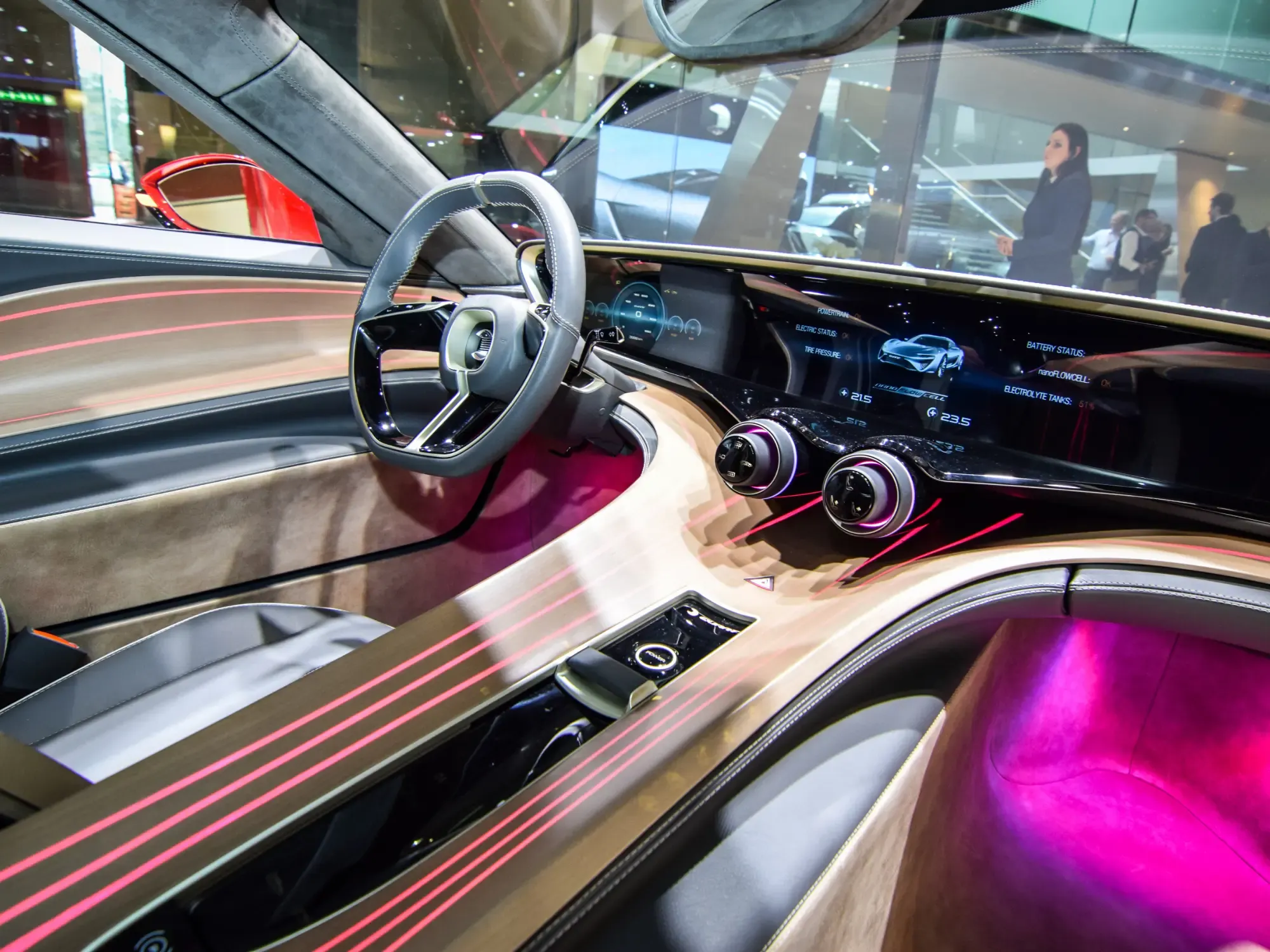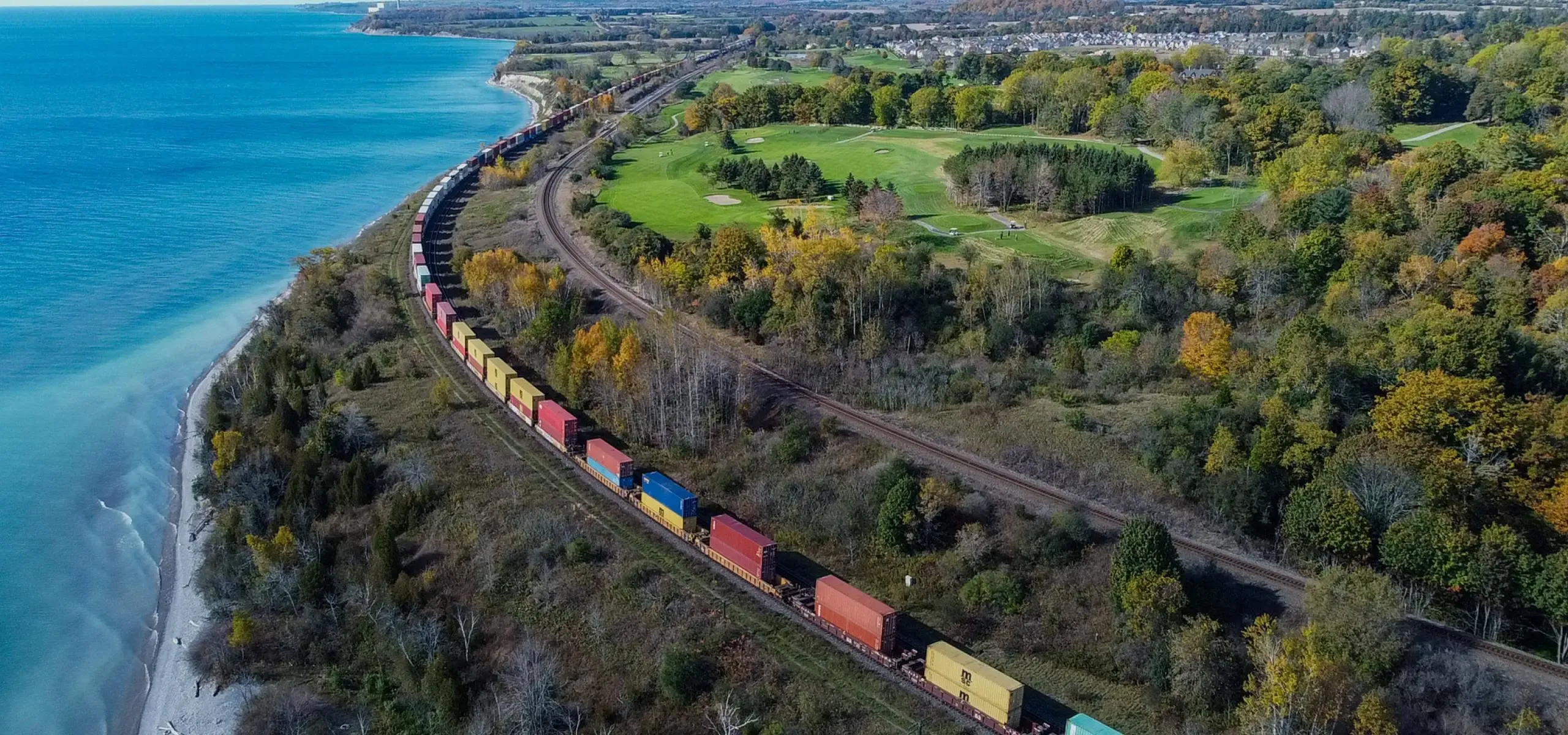Services
SERVICES
SOLUTIONS
TECHNOLOGIES
Industries
Insights
TRENDING TOPICS
INDUSTRY-RELATED TOPICS
OUR EXPERTS

August 7, 2025
Transportation companies can implement artificial intelligence in a wide range of corporate functions and business scenarios. Here are some key applications of AI and related payoffs.
Many car manufacturers have already integrated advanced driver-assistance systems (ADAS) that help with parking, ensure better control of the vehicle in adverse weather conditions, and avoid collisions. ADAS solutions rely on AI-powered cameras and sensors to identify vehicles, obstacles, pedestrians, or passengers’ facial expressions, alert drivers with sound or light signals, and trigger autonomous actions (such as braking) to prevent human errors.
AI-based ADAS such as adaptive cruise control, forward-collision warning (FCW), automotive night vision, and traffic sign recognition systems increase safety for both drivers and pedestrians.
Voice-based virtual assistants use speech recognition and synthesis technology to interact with drivers in spoken language. These tools can understand users' requests and perform a variety of tasks, such as initiating a call, switching radio stations, or providing information on vehicle conditions.
Personal assistants help minimize distracting manual interactions with in-vehicle infotainment systems, enabling a more convenient user experience and improving driver safety.
Self-driving vehicles represent the most advanced form of ADAS, as they rely on AI to completely automate the driving experience. Most embodiments of this technology are still within the realm of prototyping and experimentation, or require human supervision by law in order to be operated. However, companies like Tesla have pioneered self-driving cars with promising results. Other major types of self-driving vehicles include robotaxis, autonomous trucks and truck platooning systems (the coordinated movement of multiple trucks at close range), and autonomous navigation for container vessels through video object recognition and LIDAR.
Self-driving vehicles in transportation and logistics can help mitigate driver fatigue, operational costs, and shipping rates.
AI-based solutions can help logistics companies optimize the supply chain by coordinating fleets of vehicles, ships, and planes. Their operation is based on a blend of GPS, sensors, computer vision-powered cameras, and other interconnected IoT devices deployed to gather data regarding weather, traffic, blockages, or accidents. These devices are used in combination with AI-based analytical systems to process this information, identify recurring traffic patterns via machine learning algorithms, and generate valuable route recommendations or forecast potential traffic congestion.
Furthermore, transportation companies are turning to generative AI and large language models for logistics simulation, creating virtual scenarios to assess how demand spikes, vehicle breakdowns, or other factors would impact their network and adjust their contingency plans accordingly.
Optimized routing and fleet management ensures faster deliveries and reduces fuel consumption, resulting in cost savings and more sustainable transportation.
The adoption of AI in public transit opens up multiple opportunities for network optimization. For instance, service providers can analyze average travel times and the factors impacting them, such as road conditions and restrictions, to adjust routes, stops, connections and schedules and fully meet customer demand for maximum passenger convenience. AI-based analytics systems can also be combined with passenger apps to provide users with real-time recommendations on the best lines and boarding times, helping redistribute commuters to less crowded routes, especially during rush hour.
AI-based network planning enables public transportation systems to ensure faster commuting, minimize waiting times, and therefore deliver a better customer experience.
Powered by natural language processing and generative AI, chatbots provide customers with a convenient way to access information and receive assistance, while enabling transportation companies to automate and scale their service operations. For instance, these conversational AI solutions can answer common questions about transportation options and routes, help users schedule rides or purchase tickets, provide real-time updates on delays or arrivals, and gather valuable customer feedback.
AI chatbots can offer customer support 24/7 and assist thousands of users simultaneously, reducing support team workload and associated costs.
AI-powered traffic management systems rely on networks of sensors and cameras to oversee road and traffic conditions, identify car crashes, and make traffic predictions. This allows authorities to intervene promptly in the event of traffic accidents, speed up road repair and maintenance operations, and optimize traffic light management based on vehicle density. Organizations can also leverage GenAI to create realistic simulations of traffic flow under various conditions, allowing transportation engineers to test the impact of new road layouts or traffic policies before implementing them.
AI-powered solutions can help reduce traffic jams, queue waiting times, and carbon emissions while improving road safety and maintenance.
ANPR solutions encompass HD cameras mounted on street poles, infrared sensors for 24/7 monitoring, and image processing software used to identify vehicle registration plates. These systems are useful for a variety of management and security tasks, including journey time analysis and road infrastructure planning, the identification of vehicles violating road rules, and electronic payments enablement for cashless tolling lanes.
ANPR technology facilitates real-time traffic monitoring, law enforcement, and toll management, proving an essential tool for traffic police and other public authorities.
Artificial intelligence systems can be deployed both in indoor car parks and outdoor urban areas to facilitate parking management. These solutions can be helpful in several ways, including vehicle counting and free slot detection connected with parking availability indicators, license plate matching to detect unauthorized parking, and time tracking for easier ticket billing and payment. AI-powered cameras are also used to identify suspicious activities for parking lot security.
Smart parking systems help streamline traffic flow in city centers, mitigate parking queues, and enhance safety in public spaces.
This approach relies on machine learning-based anomaly detection to predict failures before they actually occur. A machine learning system can be trained to understand the normal operation of vehicles and transport infrastructures (such as railway overhead lines) by "feeding" it with sensor data relating to their standard performance. Once the system has learned to recognize the ideal operating patterns of the mechanical and electronic components powering a vehicle or an infrastructure, it can also detect any outlier that can be a sign of impending breakdown.
Private and public transport organizations leveraging predictive maintenance can improve vehicle reliability, reduce maintenance costs, speed up repair procedures, and cut fleet reserves deployed to avoid service disruptions.
Scheme title: AI in transportation market size forecast (USD Billion)
Data source:
Precedence Research
| The global AI in transportation market is expected to grow at a CAGR of 22.70% from 2024 to 2034 | |
|---|---|
| The AI in transportation market in the US was valued at $1.2 billion in 2024 | |
| 36% of supply chain executives surveyed are planning to implement AI-powered tools for transport management | |
| Around 25% of railway companies have already implemented multiple AI use cases at scale, while 38% have launched their first at-scale deployment |
| Using AI to optimize daily routes can reduce driver travel times by 15%, resulting in significant productivity gains for travel and logistics companies | |
|---|---|
| Adopting AI for route optimization and asset management can help freight transport companies reduce carbon emissions by up to 7% | |
| Autonomous truckload deliveries cost an average of just 0.03 cents per ton mile, less than half the cost of deliveries with human drivers (0.07 cents per ton mile) | |
| AI-based traffic signal optimization can lead to a 30% reduction in stops and a 10% reduction in emissions at intersections | |
| AI can help railway companies better plan, invest, build, and deliver efficient services aligned with passenger needs, generating €700 million in value per year for a €5 billion company. Predictive maintenance would be the most impactful use case | |
| Railway companies can reduce overall maintenance costs by 20% via AI-powered predictive maintenance and optimize shifts by up to 15% thanks to AI-driven crew planning and shift planning | |
| Autonomous driving is expected to generate $300 billion to $400 billion in revenue by 2035 | |
| Adopting autonomous trucking technology can reduce the TCO of heavy-duty trucks by 42% |
Percentage implementing
(broad or limited implementation)
Percentage reporting "extremely high" or "high" economic value
(Among companies
implementing each use case)
Scheme title: Top generative AI use cases in transportation by adoption and impact
Data
source: Deloitte
Uber's range of AI initiatives, mostly based on a proprietary ML platform named Michelangelo, is broad and ever-expanding across its business functions. The company leverages AI to match riders with available drivers, adjust rates in real-time based on service demand, calculate the Estimated Time of Arrival, and identify suspicious transactions for fraud detection. Uber also implemented an AI assistant powered by Michelangelo to provide support specialists with recommendations for ticket resolution. More recent projects are focusing on generative AI in IT operations, including mobile app testing automation.

Image title: The role of AI throughout the Uber app user flow
Image source: Uber
Like many other automotive companies adopting AI, Subaru equips its vehicles with a driver monitoring system powered by computer vision, which provides a variety of driver support features to enhance safety and comfort. The solution can scan and recognize the driver's face and alert them when detecting signs of drowsiness or distraction. It can also adjust the seat position and interface settings autonomously based on the current driver’s preferences.

California-based development company Waymo opened its robotaxi ride-hailing service to US customers in 2019, representing the first commercial service to operate without an onboard backup driver. The self-driving system combines information from LIDAR, radar, and cameras to map the surrounding area and calculate a safe route. While driverless rides only take place in controlled geofenced environments, this service is gradually expanding to new locations. In May 2025, for instance, Waymo announced plans to further expand its robotaxi operations in the San Francisco Bay Area.

To improve air traffic control and deal with the infamous London weather, Heathrow Airport has implemented Aimee, an AI solution powered by neural networks. This system designed for the air transport industry can process data collected via high-definition cameras and help controllers supervise arrivals and departures in low visibility scenarios. It also facilitates controller-pilot communication by handling departure clearance requests via natural language processing. Once deployed at full capacity, this tool should enhance the airport's landing capacity by 20%, reducing the risk of flight delays.

Image title: Aimee’s advanced object detection
Image source: Searidge Technologies
An AI-based monitoring system Surtrac, developed by Rapid Flow Technologies, has been deployed in Pittsburgh, US, to collect data with smart cameras, adjust traffic lights in real time, and thus facilitate traffic flow. The monitoring devices in each intersection operate independently, handling their own local traffic and replanning second by second. The solution has led to a 25% reduction in travel times, a 30% reduction in the number of stops, and a 20% cut in emissions.

France's national railway company SNCF adopted a predictive analytics solution to spot potential asset malfunctions (including pantographs at risk of wear), anticipate maintenance needs, and thus ensure power supply to its trains across 32,000 km of network. According to the company, predictive maintenance can also help reduce accidents related to train switches, ensuring superior economic performance, service reliability, and passenger safety.

Issue | Recommendation | |
|---|---|---|
System & data integration complexities |
The multi-layered, interconnected architecture of a typical AI solution for transportation implies that its
components, including IoT devices and data analytics software, should be able to exchange data. However,
such elements can use different communication protocols or technologies and handle multiple data formats,
including streams of real-time data. So when poorly integrated, AI systems will base their analyses on
fragmented sources and inconsistent or outdated data, delivering inaccurate predictions.
|
|
AI solution reliability issues |
The AI model powering your solution must be trained on massive data sets to deliver accurate analyses and
forecasts. Even after training, however, the model can be less reliable than expected. This can happen due
to overfitting, if the model was overtrained on a certain data set and performed poorly with other data, or
due to a model drift when its predictive power degrades because of progressive changes in input variables
and their relationships.
|
|

Itransition’s consultants can help you build and adopt AI solutions fully aligned with your needs, offering expert advice to speed up AI project implementation and overcome any technical or business challenges.
Our team develops high-performing AI software in strict compliance with your industry’s standards and regulations, or modernizes your current AI solution to keep pace with emerging tech trends and evolving business needs.

In recent years, transportation has ranked among the industries benefiting from the highest adoption rate of AI technology. This should come as no surprise, as advancements in AI have proved capable of making us travel and move goods faster, safer, and cleaner than ever before.
However, implementation efforts should always be carried out with the complex and sometimes inscrutable nature of artificial intelligence in mind, especially when it’s deployed in wide, sprawling ecosystems such as transport networks. To streamline the adoption of AI while overcoming its potential challenges, consider relying on Itransition’s team of experienced developers and consultants.
One of the most significant technologies in the transportation industry and many other sectors is machine learning, a branch of AI focusing on self-learning algorithms that can improve their performance through experience (i.e. by processing more and more data). Applications of ML include:
Computer vision to acquire visual inputs, identify people or objects, and alert the driver or trigger appropriate actions, commonly used in ADAS.
Another key technology, technically outside the realm of AI but serving as a key enabler for AI systems, is the Internet of Things. Transportation and logistics IoT solutions comprise extensive networks of devices (cameras, infrared sensors, etc.) that gather information from vehicles and infrastructures through the internet, Bluetooth, or other communications technologies and feed it into AI software. A common use case is traffic data collection to optimize routes.
In the near future, we can expect transportation companies to significantly deepen their investments in AI-powered predictive analytics to enhance decision-making, for instance by forecasting traffic patterns and passenger demand to optimize traffic management and urban mobility. At the same time, adoption of critical GenAI capabilities will continue to rise, reinforcing its role as a natural interface between complex systems and decision-makers. Autonomous vehicles will also remain a key area of research, with the ultimate goal of shifting from experimental implementations in controlled environments to large-scale deployment.
In common case scenarios, the implementation budget ranges from $5,000 to $10,000 for a PoC. Costs can increase up to $50,000 for integrating, refining, and enhancing the PoC into a basic production system. For more complex implementations, such as those requiring multiple integrations and extended PoC functionality, implementation budgets start from $50,000 and scale based on scope. Major cost factors include:

Insights
Explore key use cases, payoffs, and real-life examples of AI in the automotive industry, along with common adoption challenges and tips to address them.

Service
Get ML consulting and development services from machine learning experts. Proven expertise in artificial intelligence, machine learning, and data science.

Insights
Find out how machine learning is transforming logistics and supply chain, including its top use cases, benefits, technologies used, and implementation tips.

Case study
Learn how Itransition helped an automotive startup launch a SaaS platform that transforms how vehicle owners and companies work together for mutual benefit.

Insights
We explore IoT applications in the automotive industry, describe the most prominent real-life examples, and explain the architecture of connected cars.

Case study
Find out how Itransition migrated a BI suite to the cloud and delivered brand-new cloud business intelligence tools for the automotive industry.
Services
Industries